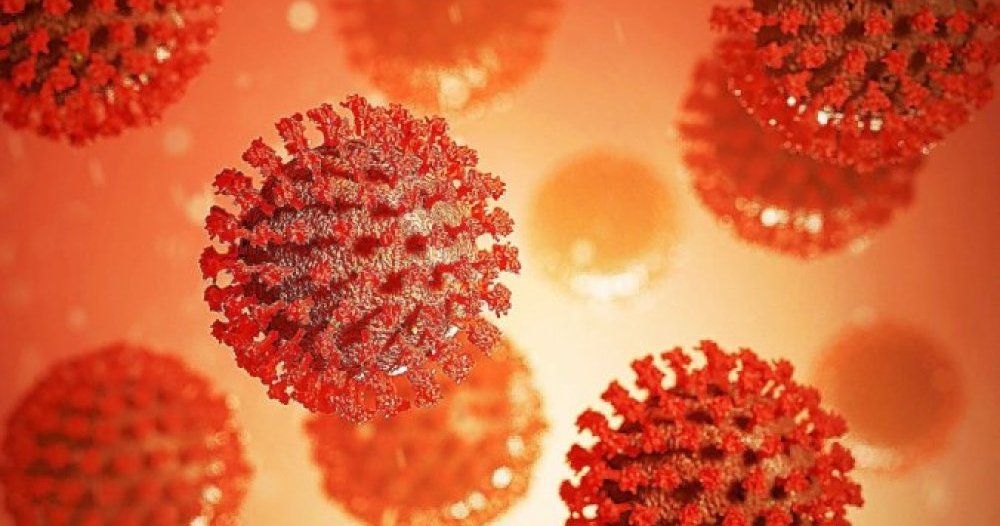As the covid-19 epidemic ebbs in Europe and protective measures fall one after another, scientists continue to scrutinize the Omicron variant and its various sublineages. There are, of course, BA.1 and BA.2, responsible for the two epidemic peaks in France at the start of the year, but two new « cousins », BA.4 and BA.5, are now also in the sights. , due to genetic variations that seem to give them an advantage. On Thursday, they were both classified as “Variants of Concern (VOC)”, the “club” of the most problematic variants, by the European Center for Disease Prevention and Control (ECDC).
A growth advantage of 12% to 13% compared to BA.2
These two viruses were first detected in South Africa in January and February; they are now dominant there, in the middle of the fall season. They have the particularity of presenting several mutations in the part of their genome which codes for the Spike protein, the “key” which allows the SARS-CoV-2 virus to enter our cells. In particular the L452R substitution, which also exists at Delta.
In South Africa and Portugal, where BA.5 accounted for 37% of positive cases as of May 8, a growth advantage of 12% to 13% was estimated over the BA.2 variant. According to the ECDC, this superiority of BA.4 and BA.5 would »
probably due to their ability to evade the immune protection induced by previous infection and/or vaccination, particularly if this has weakened over time”.
At least one case in Brittany
How to restart the epidemic in Europe? The health agency makes no secret of it, “the presence of these variants could lead to a significant overall increase in cases of covid-19 (…) in the weeks and months to come”, she warned, Friday, in a press release. They could even become dominant there within a few months, she suggests, while in Portugal that deadline could come. by May 22.
In France, where BA.2 remains ultra-majority, only seven cases of BA.4 and 15 of BA.5 have been identified in the territory aMay 10, revealed Public Health France in its weekly report of May 12. A number undoubtedly very underestimated compared to reality, since it was produced from “flash” sequencing investigations, which are based on a limited number of positive tests. Another method – indirect and imperfect – of detecting these two sub-variants, the search for the L452R mutation, by screening tests. In proportion, the presence of this mutation doubled during the week of May 2 to 8, compared to the previous one (from 0.4% to 0.8%).
The distribution of BA.4 and BA.5 cases by region is not communicated by Public Health France, but, according to our information, Brittany is one of those where at least one case has been detected. The proportion of L452R mutations is also increasing there, but remains below 2%. A data to be taken with tweezers, however, because our region is the one where BA.2.11, another sub-variant carrying this same mutation, circulates the most in France.
ECDC calls for « vigilance »
What about the dangerousness of BA.4 and BA.5? The first data, still limited, are rather reassuring and the ECDC does not observe, at this time, « no significant increase in the severity of the infection compared to the circulating lines BA.1 and BA.2 ». The risk of weighing on hospital services remains present, however, if the number of cases of covid-19 were to explode, as during the two previous waves in France. Good news nevertheless, epidemiologists are already observing, in South Africa, provisional signs of a slowdown in the epidemic, at a level much lower than that known with Omicron first of the name.
Attempt promising news with the BA.4 / BA.5 -driven #5thWave of #COVID19 in South Africa?? flattening out and already showing signs of slowing down?
Cases 7-day avg at 7,200 or 12 per 100k; Testing remains low, understandably, but avg test % positivity also steady at 24%? pic.twitter.com/PO32VAfa98
—Ridhwaan Suliman (@rid1tweets) May 15, 2022
Nevertheless, the ECDC encourages countries to remain “vigilant as to the signs of the emergence of BA.4 and BA.5”.
